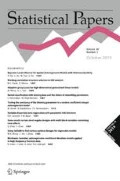Zusammenfassung
Im Zentrum des angestrebten Modells steht eine Beschreibung und Analyse der personellen Ströme, die als Schüler und Lehrer durch das gesamte formale Bildungssystem fließen. Diese Ströme sollen auf die Dauer jedes Jahr ermittelt werden. Aus den Veränderungen der Ströme sollen Schlüsse für die Zukunft (Prognosen) gezogen und die Flexibilität des Systems ermittelt werden. Auf diese Weise ist das Modell eine Entscheidungshilfe im Rahmen der Bildungsplanung.
Das Projekt ist zunächst für drei Jahre bewilligt worden. Im Vordergrund der ersten Forschungsjahre wird der empirisch-statistische Teil des Vorhabens stehen.
Als die wichtigsten Resultate werden die folgenden angesehen:
1. Eine gründliche statistische Bestandsaufnahme des gegenwärtigen Bildungssystems und die Ermittlung der heute zu beobachtenden Entwicklungstendenzen in quantitativer Hinsicht. 2. Eine wichtige Hilfestellung bei bildungspolitischen Entscheidungen, da mit Hilfe dieses Modells die quantitativen und kostenmäßigen Konsequenzen solcher Entscheidungen errechnet werden können. 3. Eine für Planungszwecke geeignete Verwertung und Speicherung des von den statistischen Ämtern etc. mit hohen Kosten erhobenen Materials. 4. Das systematische Aufdecken von Lücken im statistischen Material. 5. Eine für Planungszwecke geeignete Verwertung und Speicherung von gesicherten Ergebnissen der Bildungsforschung. 6. Hilfestellung bei der Entwicklung einer Prioritätenliste für Forschungsprojekte im Bereich der Bildungsforschung. 7. Die Ausbildung von methodisch und wissenschaftlich versierten Bildungsstatistikern.
Summary
The description and analysis of the personal flows of students and teachers which characterize the entire formal educational system form the central aspect of the projected model. These flows are to be determined annually for a longer period of time. Prospects for the future (forecasts) will be derived from the changes observed within these flows and the flexibility of the system will be determined. In this way the model serves as an aid for the purpose of taking decisions in educational planning.
So far, the project has been authorized for a period of three years. During the first year empirical statistical research will play a preponderant role.
The following are considered to be the most important results:
1. A comprehensive statistical stock-taking of the present educational system and the establishment of present development trends from a quantitative point of view. 2. The development of an important aid for decisions to be taken in the educational field, since this model allows for the determination of the quantitative and financial implications of such decisions. 3. The evaluation and accumulation of material compiled at high costs by statistical offices, etc. 4. The systematic spotting of gaps in the statistical material. 5. The evaluation and accumulation of verified results of educational research for planning purposes. 6. The development of an aid in the setting-up of a list of priorities for research projects in the field of educational research. 7. The training of methodologically and scientifically skilled statisticians in the field of education.
Résumé
Le but principal du modèle qu’on veut obtenir est, de décrire et d’analyser les courants personnels, qui traversent tout le système d’éducation sous forme d’élèves et de corps enseignant. A la longue il faut obtenir ces courants pour chaque année. Les changements des courants permettent de tirer des conclusions pour l’avenir (pronostics) et d’établir la flexibilité du système. Ainsi le modèle peut être utilisé lorsqu’il s’agit de prendre des décisions dans le cadre de la planification de l’éducation.
La durée du projet a été accordée d’abord pour la période de trois ans. Au premier plan des premières années de recherches figure la partie empirique et statistique du projet.
Les principaux résultats qu’on espère obtenir sont les suivants:
1. Un scrupuleux recensement statistique du système d’éducation actuel et, du point de vue quantitatif, la constatation des tendances de développement qui peuvent être observées actuellement. 2. Une aide précieuse pour les décisions qui concernent l’éducation, vu la possibilité de calculer (à l’aide de ce modèle) les conséquences quantitatives de telles décisions ainsi que l’influence que peuvent avoir ces décisions sur les frais. 3. Le matériel obtenu à grands frais par les services de statistique, est mis en valeur et accumulé de façon qu’il se prête aux buts de la planification. 4. Découverte systématique de lacunes dans le matériel statistique. 5. Les résultats des recherches faites dans le domaine de l’éducation sont accumulés et utilisés en vue de la planification. 6. Le modèle aide à dresser une liste de priorités des projets de recherches à faire dans le domaine de l’éducation. 7. Formation d’un personnel scientifiquement bien préparé dans le domaine de la statistique de l’éducation.
Резуме
В центре имеюшейся в виду модели стоят описание и анализ персональных потоков, которые в качестве учеников и учителей протекают через систему образования. Такие потоки должны быть определены на один год, и из их изменений намеревается делать прогнозы на будушее и определить Эластичность системы. Таким образом, модель является инструментом для рещений в рамках планирования народного образования.
Проект запланирован на три года. На первом плане Этих первых лет исследований будут стоять Эмпирико-статистиче ские аспекты. Как важнейщие результаты рассматриваются следуюшие:
1. Оснавательный статистический анализ имеюшейся системы образования и определение наблюдаемых тенденций развития в количественном разрезе. 2. Важнейщий инструмент для рещений в области политики народного образо вания, так как при помоши такой модели можно определить качественные и финансовые последствия принятых рещений. 3. Пригодное для целей пла нирования использование и аккумуляция материала, собранного статисти ческими ведомствами и т. д. с долыиими расходами денежных стредств. 4. Систематическое раскрывание всех пробелов в статистическом материале. 5. Пригодное для целей планирования использование и аккумуляция досто верных результатов исследований в области образования. 6. Помошь при составлении перечня приоритетов для исследовательских проектов в области образования. 7. Обучение опытных в смысле методологии и науки статистиков народного образования.
Additional information
Es handelt sich hierbei um ein von der Stiftung Volkswagenwerk finanziertes Projekt, das unter Leitung der beiden Verfasser dieses Plans zusammen mit z. Z. zehn Mitarbeitern an der Universität Heidelberg durchgeführt wird. Das Projekt soll durch die Publizierung dieses Entwurfes der interessierten Öffentlichkeit zur Anregung einer für die Verfasser wichtigen Diskussion vorgestellt werden.
Rights and permissions
About this article
Cite this article
von Weizsäcker, C.C., Freytag, H.L. Plan eines Projektes: »Ein quantitatives Modell des Bildungswesens in der Bundesrepublik Deutschland«. Statistische Hefte 8, 32–49 (1967). https://doi.org/10.1007/BF02922862
Issue Date:
DOI: https://doi.org/10.1007/BF02922862

